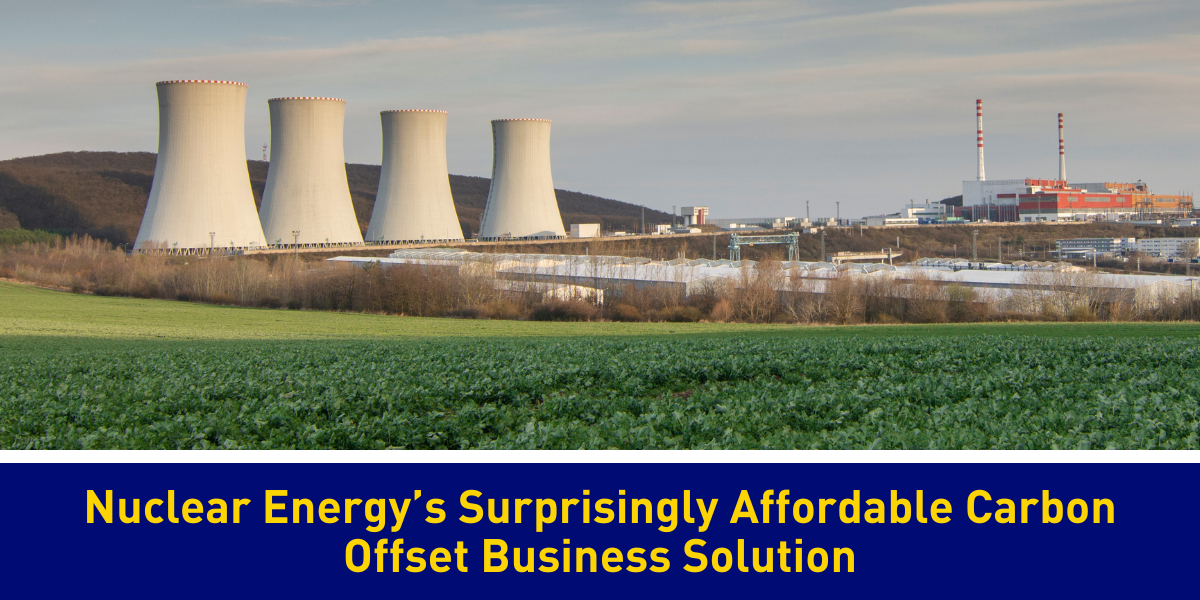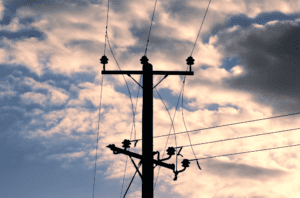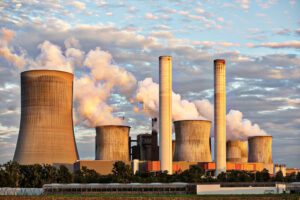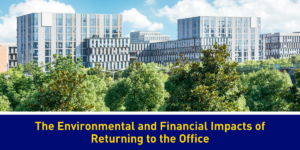In September we celebrate International Day of Clean Air. The United Nations General Assembly adopted the resolution in 2020 with updated objectives emphasizing the importance of across borders cooperation, since air pollution does not respect arbitrary boundaries, and it emphasizes green solutions.
The month of September also brings Internatlonal Day for the Preservation of the Ozone Layer. National Clean Up Day is coming up soon. Zero Emissions Day rounds out the end of the month.
To achieve net zero by 2050, organizations must find ways to reduce or eliminate their carbon footprint in a relatively short period of time. It is a daunting task for many industries, as a company’s footprint extends beyond the carbon emissions it directly produces from operations.
Carbon footprints are also measured by emissions produced by a company’s vendors and its employees. For example, purchasing electricity extends a business’s carbon footprint, as does the gas burned by employees’ cars as they commute to work.
For many companies, reducing or eliminating emissions is either cost prohibitive or detrimental to the bottom line. Purchasing carbon offsets, however, provides a practical solution. With carbon credits, businesses swap emissions production with an organization that is actively creating an equal or greater reduction through a carbon reduction project. The swap creates a carbon emission rate of net zero.
Carbon offset projects and how they work
It may be simplest to think of carbon offset programs as the equivalent of planting a tree on the East Coast for every tree cut down on the West Coast. It doesn’t matter where the tree was cut down, only that a tree replaces it somewhere. The amount of C02 the tree absorbs is the same wherever it takes root.
The same goes for carbon emissions. Wherever it is produced, C02 can travel great distances once it mixes with the atmosphere. As long as that C02 is absorbed and eliminated – or, better yet, never produced at all – it doesn’t matter where that happens.
Companies who choose to supplement their carbon neutral strategies with carbon offsets purchase credits in one of two categories, avoided emissions or carbon capture. Credits purchased support emissions avoidance and capture projects. The three project categories that make up the bulk of carbon offsets are:
Forestry and Conservation:
Reforestation and conservation projects focus on planting new forests to capture carbon and reduce deforestation to avoid carbon emissions.
Renewable Energy:
Renewable Energy Credits (RECs) help expand and maintain the industry while ensuring an increase in clean energy is delivered to the grid.
Emission-Free Energy:
Emission-free energy certificates (EFECs), like RECs in form and function, represent a specific amount of emission-free power produced by non-emitting generation units, most notably nuclear power.
If the mention of nuclear power as a clean energy source surprised you, you’re not alone.
The carbon offsetting business of nuclear power
Most organizations – and individuals, for that matter – are familiar with conservation and renewable energy efforts. Innovations in renewables and eco friendly efforts are stories often shared by those in the know.
Yet those same organizations are equally surprised to learn how historically deep-rooted nuclear power is in emissions reduction efforts. For example, energy sourced from nuclear power generation has reduced carbon dioxide emissions by over 60 gigatons in the last 50 years. That’s equal to two years’ worth of global energy-related emissions, according to IEA.
Because global energy is increasingly based around electricity, nuclear is poised to be a key contributor to the world’s net zero success. The U.S. leads the way, generating more nuclear power than any other country and about 20% of U.S. electricity since 1990.
But achieving net zero can only happen if the electricity sector evolves beyond its post as the largest producer of carbon emissions and becomes a low-carbon emissions source that reduces fossil fuel emissions in areas like transport, heating and industry, IEA reports. It could happen, with nuclear power’s support.
Unlike conventional power plants, which burn fossil fuels to generate heat, boil water and fuel steam-powered turbines, nuclear power plants use fission, or the splitting of atoms, to do the same. Burning fossil fuels produces carbon, contributing to the industry’s overall climate impact. Fission is a zero-emission process.
Beyond producing emissions free energy, nuclear power plants will ease the transition by helping:
- Power grids remain stable
- Minimize the impact of demand and supply shifts by adjusting operations
- Reduce dependence on imported fuels
- Limit the impact of renewables output caused by seasonal fluctuations by generating energy around the clock, seven days a week, 365 days a year.
EFECs often selected as best carbon offset option for organizations
The unique attributes of nuclear-powered energy allow generators like Energy Harbor to offer U.S.-based businesses and organizations carbon offsets called Emissions-Free Energy Certificates (EFECs) that are affordable, plentiful, and easy to purchase.
EFECs are more affordable on the offset market than other options like RECs in part because of the high cost of infrastructure creation and maintenance tied to renewables and conservation programs. Nuclear power infrastructure already exists, and maintenance is often less expensive, allowing generators like Energy Harbor the ability to offer EFECs at low cost.
Nuclear is also the most reliable source of clean energy, both from a capacity factor and because it is the only carbon-free energy generator that operates 24 hours a day, 7 days a week, 365 days a year. RECs do their best, but can be hampered by inclement weather and fluctuations in solar and wind accessibility. Backup power for these resources is often provided by nuclear energy. That also makes the carbon reduction impact from EFECs immediate, unlike forestry and carbon capture technology.
Just like Green-e Certified RECs, Emission-Free Energy Certificates are auditable through the Generation Attribute Tracking System (GATS) managed by PJM Environmental Information Services.
EFECs offset energy for new or existing supply contracts, for both power and natural gas. Even if your business’s power supply is with another supplier, Energy Harbor can provide EFECs to offset your hourly usage on top of an existing agreement.
If you’re ready to add carbon offsets to your net zero strategy, Contact Us.
Source: https://energyharbor.com/en/carbon-offset/carbon-offsetting-benefits






